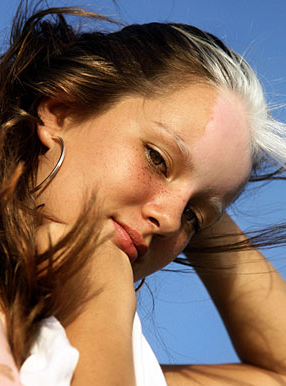Vitiligo, as kin disorder characterized by white patches on the skin, may also affect children above the age of 2. When compared to adults, children are more common only affected by this condition. The main reason for this is that children – specifically those below age 14 – have more sensitive skin and thus are more prone to vitiligo. Proper care must be given to children suffering from vitiligo, with special attention on the social impact this could have on them.
Causes of vitiligo:
The main cause is that all the organs of a child are still in their initial stages of development, and their resistance to any type of disorder or any type of skin infection is still not that dependable. Apart from this, vitiligo also has a genetic basis; that is, if any parent, either the mother or the father, is suffering from vitiligo, then the child, who carries the same genes, will have greater chances of suffering from vitiligo than one who doesn’t have affected parents. Moreover, children who have autoimmune diseases are more prone as well. Children with very soft and sensitive skin should be given more care as they are more prone to vitiligo and they are more likely to be affected than others.
Treatment:
Once your child is diagnosed with vitiligo then carry out immediate treatment in order to get rid of the problem and to prevent the symptoms from spreading to other parts of the body as well. There are many treatments available, but a doctor is likely to prescribe just one to suit the child, and that alone should be administered; not several treatments simultaneously. Before undergoing a treatment, diagnosing the problem is highly recommended and depending on the results of the exams, the appropriate treatment regimen is recommended. Apart from treatment, a strict diet must be followed, which can also help in reducing the effects of vitiligo.
- Give milk and eggs to your child daily, as they are rich in both calcium and vitamins. Milk can be given daily, but the egg should be given only on alternating days.
- Give your child natural fruits daily.
- Ask your child to consume fish nuggets once a week.
- There mustn’t be spicy foods and processed liquids in the diet.
- Add fresh and green vegetables to the diet daily.
You can follow this diet to cure vitiligo in your child instead of spending a lot of money on surgeries. There are anti-vitiligo oils available as well, which can be purchased and applied onto the affected areas of the child’s skin, which also helps in reducing the symptoms and in repigmenting the skin. Along with the diet, a change in the lifestyle of the child will also help in curing vitiligo.
- Do not ask your child to wear tight-fitting clothes as these restrict circulation and may prevent blood from flowing to certain areas of the skin.
- Don’t allow your child to keep on scratching an itch as this will increase the likelihood of vitiligo and if already present will be more likely to spread to other parts of the body.






















